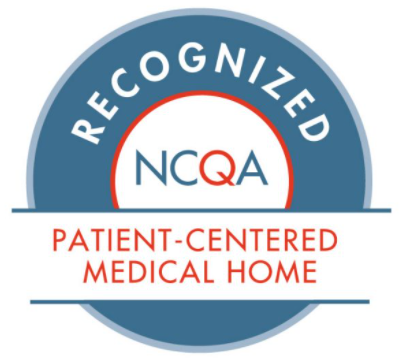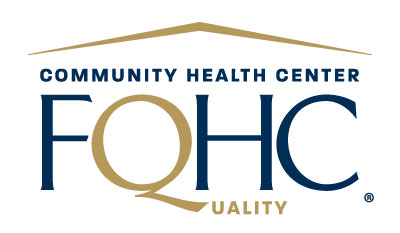Our 2023-2026 Strategic Plan
In April 2023, our Board and key leadership launched a new three-year Strategic Plan to guide JPCHC’s organizational priorities and operations through 2026.

Our 2023-2026 Strategic Plan

In April 2023, our board and key leadership launched a new three-year Strategic Plan to guide JPCHC’s organizational priorities and operations through 2026.
Our 2023 - 2026 Strategic Plan
In April 2023, our board and key leadership launched a new three-year Strategic Plan to guide JPCHC’s organizational priorities and operations through 2026.

Strategic Plan Development
The five-month undertaking with the JPCHC Board, key leaders and strategic consulting group HMA saw development of our plan following a needs assessment, business assessment, facilitated strategic planning retreat and delivery of final report. An action plan was deployed against four key pillars:
Pillar 1
Ensure JPCHC Patients Receive Consistent, High-Quality, Compassionate Care
Pillar 2
Eliminate Disparities in Care Experienced by JPCHC Patients & Community
Pillar 3
Ensure a Healthy & Engaged Workplace
Pillar 4
Ensure JPCHC’s Financial Health
The Action Plan
a. Create a Culture of Quality
- Set clear and attainable quality goals
- Develop campaign to educate, engage, and energize staff around quality program
- Communicate benefit of quality program for both patients and staff using outcomes data and anecdotes
- Develop incentive system to recognize staff for progress towards/ achievement of quality goals
b. Optimize Care Teams
- Standardize care team member roles and function
- Practice team-based care consistently across all providers and settings
- Make use of evidence-based guidelines the expectation/norm
- Consider pursuing NCQA PCHM Recognition for all JPCHC sites as a framework for standardization
- Enhance remote work policies and procedures
- Bring clinical pharmacy expertise into care team/ disease management
c. Enhance Data-Driven Decision-Making
- Fully leverage capabilities of existing data systems
- Ensure that JPCHC has access to patient data from other external health care settings (e.g., hospitals, payers), and that the data is timely, consistent, accurate, and actionable
- Enhance initial and ongoing training for providers and staff regarding how to use systems to support patients and monitor performance
d. Improve Access to Care and Increase Number of Patients Served
- Identify opportunities to reduce the wait time for appointments (e.g., exploring open access model, expanding same-day access, standardize schedules across providers, use of telehealth)
- Expand telehealth services, particularly to meet needs of rural communities, schools, behavioral health
- Reduce no-show rates through implementing patient reminders and other engagement strategies
- Develop patient education component regarding new/enhanced access systems
- Develop strategy to engage/ retain Medicare population
- Explore the addition/expansion of sites and/or service lines that are sustainable and meet patient needs (e.g., optometry, podiatry). Use data from referrals to drive decision-making.
- Explore partnership with CHN regarding meeting school-based health needs through telehealth services
- Implement efforts to improve ability to manage referrals – especially closing the loop
e. Implement Strategies to Attract Patients and Position the Health Center
- Continue to advance marketing work to help educate the community regarding JPCHC’s services and engage patients
a. Understand Patient and Community Disparities
- Establish ongoing process to regularly collect and analyze data that allows JPCHC to understand disparities in care and health outcomes faced by patients
b. Ensure that JPCHC Demonstrates a Commitment to Diversity, Equity, and Inclusion (DEI)
- Demonstrate commitment to staff, patients, and the community to diversity, equity, and inclusion.
- At minimum, ensure that the Board, leadership, providers, and staff are reflective of the community
- Consider the addition of a DEI Board Committee focused on the needs of both patients and staff
- Demonstrate commitment to staff, patients, and the community to diversity, equity, and inclusion.
c. Enhance Efforts to Identify and Meet SDOH Needs
- Enhance SDOH screening, incorporating into the visits or ahead of time and then connecting to resources
- Implement process to track SDOH referrals and close the loop on referrals made
- Leverage data collected through programs targeted at SDOH issues (e.g., food pantry)
- Regularly analyze comprehensive SDOH data, ultimately incorporating it into patient risk stratification and modeling
- Explore/enhance partnerships with organizations that address SDOH needs experienced most by JPCHC patients (as demonstrated by the data)
- Explore opportunities to enhance/expand the food pantry program to meet needs around food insecurity
a. Understand and Meet Workforce Needs
- Provide forums to obtain, assess, and respond to employee feedback
- Actively develop and implement strategies that promote joy in the workplace
- Understand the evolving mental health needs of staff and implement strategies to provide support
b. Enhance Recruitment and Onboarding Processes
- Strengthen recruitment pipelines for staff,
including nurses and medical assistants - Enhance onboarding and training processes
- Respond to market forces regarding hiring to ensure JPCHC remains competitive
- Strengthen recruitment pipelines for staff,
c. Enhance Residency Program
- Undergo strategic planning process with residency partner (CHN) to ensure alignment of goals and strategies
- Explore alternative funding support expand/enhance residency program (e.g., teaching health center model, rural health, CHN Greenwood site, potential Southside site)
- Explore opportunities to better to integrate residents into other service lines – psychiatry residents advising family practice physicians, podiatry residents providing care at JPCHC, etc.
- Improve retention by creating clear mechanisms around loan repayment for residents
a. Improve Performance on Current Incentive Programs
- Establishing regular reporting/monitoring on metrics in current incentive programs
- Incorporate strategies to improve metrics in Quality program
- Communicate to staff incentive program goals, metrics, and progress
- Consider methods to tie successful performance to staff incentives
b. Monitor and Manage Rising Costs
- Closely monitor rising costs (including those related to staffing and supplies) and:
- Develop strategies to mitigate whenever possible
- Ensure JPCHC can maintain the workforce it needs to meet patient service and growth goals
- Continue proactive advocacy for policies, programs, and funding that support patient care and the financial health of the organization (e.g., 340b program, payment models, etc.)
- Closely monitor rising costs (including those related to staffing and supplies) and:
c. Explore Alternative Funding Structures
- Continue to engage with IPHCA and other FQHCs to
pursue a joint strategy to advance value-based payment options - Advance partnerships with hospitals to participate more fully in hospital-based VBP opportunities (including residency program)
- Explore the creation of a foundation to allow JPCHC flexibility to offer/expand programs that may not be properly suited under the 330-grant budget
- Continue to engage with IPHCA and other FQHCs to

Guiding Principles: Our Mission, Vision & Values
As part of the strategic planning process, our Board, key stakeholders and staff all participated in a process to refine our mission, vision, and values. The goal was to ensure they reflect current priorities as highlighted in the strategic plan and have organizational alignment with our dedicated teams.
Our Mission
The mission of Jane Pauley Community Health Center is to provide accessible, respectful, and integrated healthcare to all regardless of insurance status.
Our Vision
Jane Pauley Community Health Center will be the provider of choice in the communities we serve as responsible and compassionate leaders in health care.
Our Values
Quality Care
Provide exceptional quality care for our patients by using evidence-based and best practices to demonstrate compassion for the people we serve.
Integrity
Provide services with respect and dignity for our patients and the community in which we work.
Community
Be accessible by helping patients meet their needs through affordable quality health care.
Stewardship
Wisely and responsibly use resources to the maximum possible effect to further our mission.
Partnership
Nurture partnerships with other providers in our community to ensure patients have full access to resources that help them achieve their health and wellness goals.
Health Equity
Reduce health disparities by providing healthcare services that are respectful of and responsive to our diverse community’s health beliefs, practices, and cultural and linguistic needs.





